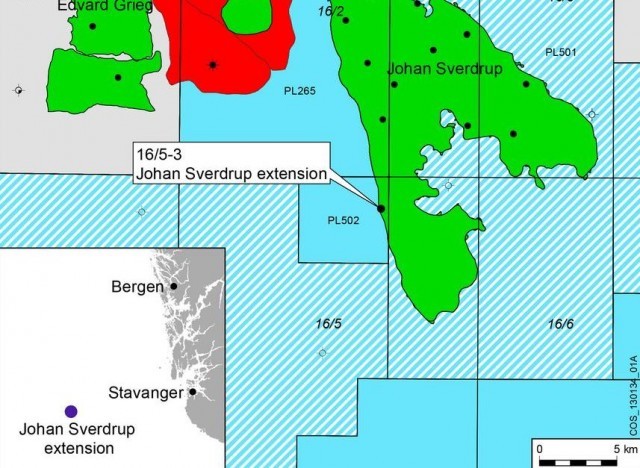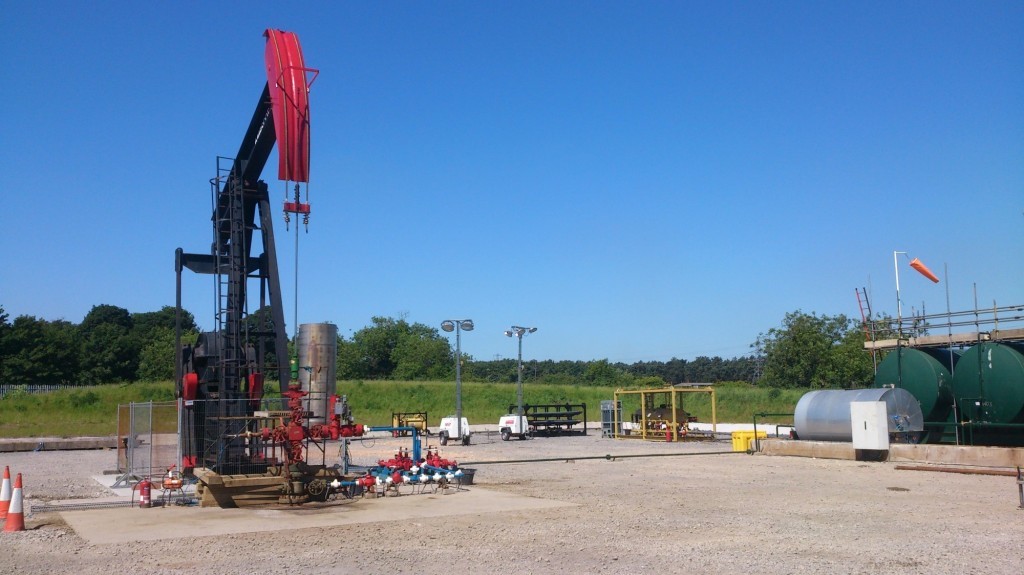
Norway’s government and the opposition reached a compromise to start electrification of three North Sea oil fields by 2022, a plan they say will avoid a delayed start to the country’s biggest offshore find in decades.
The accord ended weeks of wrangling in parliament over whether to force Statoil ASA to power the installations from land. The deal plans for full electrification of the area, known as Utsira High, while ensuring that the Johan Sverdrup discovery is developed as scheduled, said Nikolai Astrup, an energy committee member for the ruling Conservative Party.
“It’s tight for Statoil but we feel confident that Statoil can deliver,” the lawmaker said yesterday in an interview after a press conference at the Oslo-based parliament.
In an unprecedented move last month, Labor and other opposition parties formed a majority in parliament and demanded that Statoil and other energy companies include three more fields in their power plan for Sverdrup as part of broader efforts to cut greenhouse-gas emissions. The companies would need to start laying cables to the other fields in Sverdrup’s “start-up phase,” they said at the time. Statoil said this could mean delays to the 2019 output start and lead to losses of as much as 20billion kroner ($3.3billion).
Statoil shares rose 0.7% to 182.9 kroner as of 10.36am in Oslo. Lundin Petroleum AB, another partner, slid 0.2% to 131.2 kronor in Stockholm.
That plan was later revised by Labor and the Conservatives, leading to yesterday’s full-committee agreement. The second phase of the development was seen to start “three to five years at the earliest” after the first, according to Oil and Energy Minister Tord Lien.
“We’re happy that the parliamentary majority has found common ground with the government parties and contributed to an agreement that will ensure that the Sverdrup development can proceed as planned,” Lien said in an e-mail today. This avoids a delay and “the consequences it would have had for thousands of Norwegian industry jobs,” he said.
Statoil spokesman Oerjan Heradstveit said by phone yesterday that the compromise means full electrification will not happen in phase one as the second stage will start some time in 2022.
“We wish to contribute to realizing the committee´s recommendation for full electrification by 2022 without delaying Sverdrup´s first phase,” he said. “We will spend some time to familiarise ourselves with the recommendation.”
Discovered in two parts by Lundin Petroleum AB in 2010 and Statoil in 2011, Sverdrup renewed optimism in Norway’s oil industry after a decade of falling output from aging North Sea fields. The discovery could supply as much as 25 percent of Norway’s crude production 10 years from now, according to the Norwegian Petroleum Directorate.
Statoil estimated in December that Sverdrup holds as much as 2.9 billion barrels of oil equivalent even as it cut its resource estimate and delayed the start of output by a year.
Astrup said it was a condition of the minority government, which also includes the Progress Party, that there would be no more delays to Sverdrup.
“We have also put in place an area solution for the whole Utsira area, which has been a goal for the government in line with the climate agreement the whole time,” he said. The talks over the Utsira High area are “extraordinary” and all other offshore agreements will be treated according to common practice, he said.
Norway’s Green Party, which gained a seat in the parliament of western Europe’s largest oil producer for the first time last year, said the compromise shows a shift in how parliament handles offshore developments.
“The decision itself is definitely good, it proves that parliament has taken a firm grip” on climate issues, Rasmus Hansson, the Green Party’s member of the committee, said by phone.
“Parliament proved it can do that. It has been wishy- washy until now, letting things slip.”
Recommended for you
